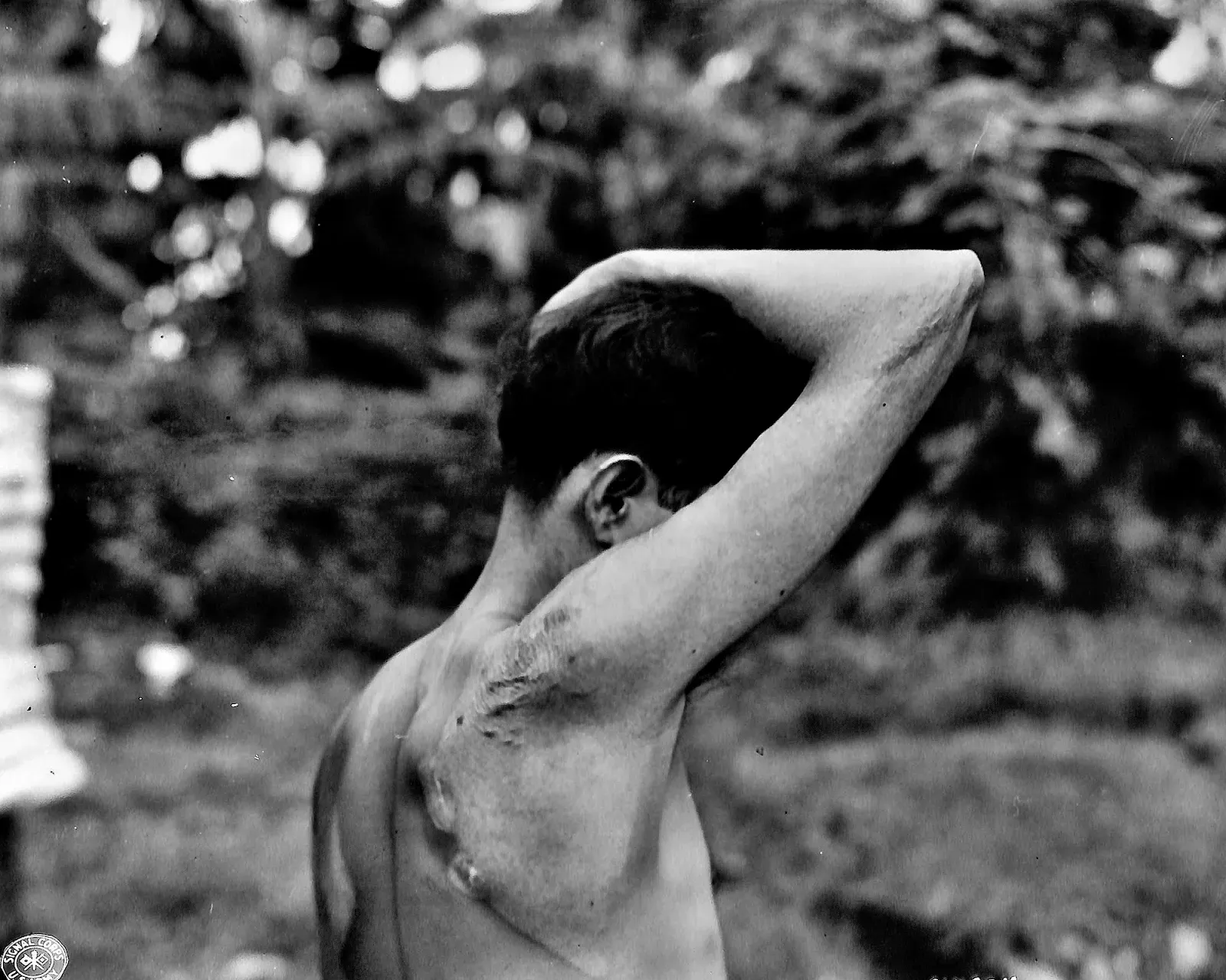Summary of Japanese Atrocities Committed in Bauan, Batangas in 1945
[TRANSCRIPTION]
In late February 1945, the Japanese committed severe atrocities against the civilians in the town of Bauan, Batangas. A summary of the atrocities is provided below, taken from an official document1 from the war crimes trials that followed the end of World War II in the Pacific.
The text is provided verbatim from the original document. Pagination is as it was originally provided for citation purposes.
 |
| A victim of Japanese atrocities in Batangas. Photo unrelated to this page's content. Image credit: United States National Archives. |
[p. 12,446]
We submit in evidence IPS document No 2790, which is a summary of JAG2 Report No. 69 on the massacre of civilians at Bauan, Batangas in February 1945.
THE PRESIDENT: Admitted on the usual terms.
CLERK OF THE COURT: Prosecution document No. 2790 will receive exhibit No. 1374.
(“Whereupon, the document above referred to was marked prosecution exhibit No. 1374 and received in evidence.)
MR. HORWITZ: We read the entire summary:
“On the morning of 28 February 1945, members of the Japanese Army stationed at Bauan, Batangas Province notified all residents of the town [that] there would be a mass meeting at the Bauan Roman Catholic Church, and that everyone should assemble there forthwith. In order to prevent escape, guards were placed on all roads leading from the town. By 1000 on the morning in question, practically everyone in the village had congregated at the church, at which time the women and children were separated from the men and taken to the Bauan Elementary School building. The men, forced to remain in the church, were then searched by the Japanese, and everything of value appropriated; they were then told to sit in the pews, eight men to a bench, and a quick count disclosed
[p. 12,447]
a total of 328 men present. No further action was taken until 1300, at which time the men were marched in groups of 100 into the basement of the house of Severino BAUTISTA, about 100 yards northeast of the church. The doors of the basement were closed and, a short time thereafter, Japanese soldiers were heard moving around the floor above. A hissing sound was then heard, followed by the sound of Japanese soldiers running away. Immediately thereafter, there was a deafening explosion which either killed or wounded most of those in the basement. Most of those not killed by the explosion were shot or bayoneted as they attempted to escape from the building, but a few managed to slip away.”
Notes and references:
1 “IPS Document No. 2790,” official documentation of war crimes trials by the US Army Judge Advocate’s Office, Western Pacific Theater, 1945.2 Judge Advocate General, United States Army.
